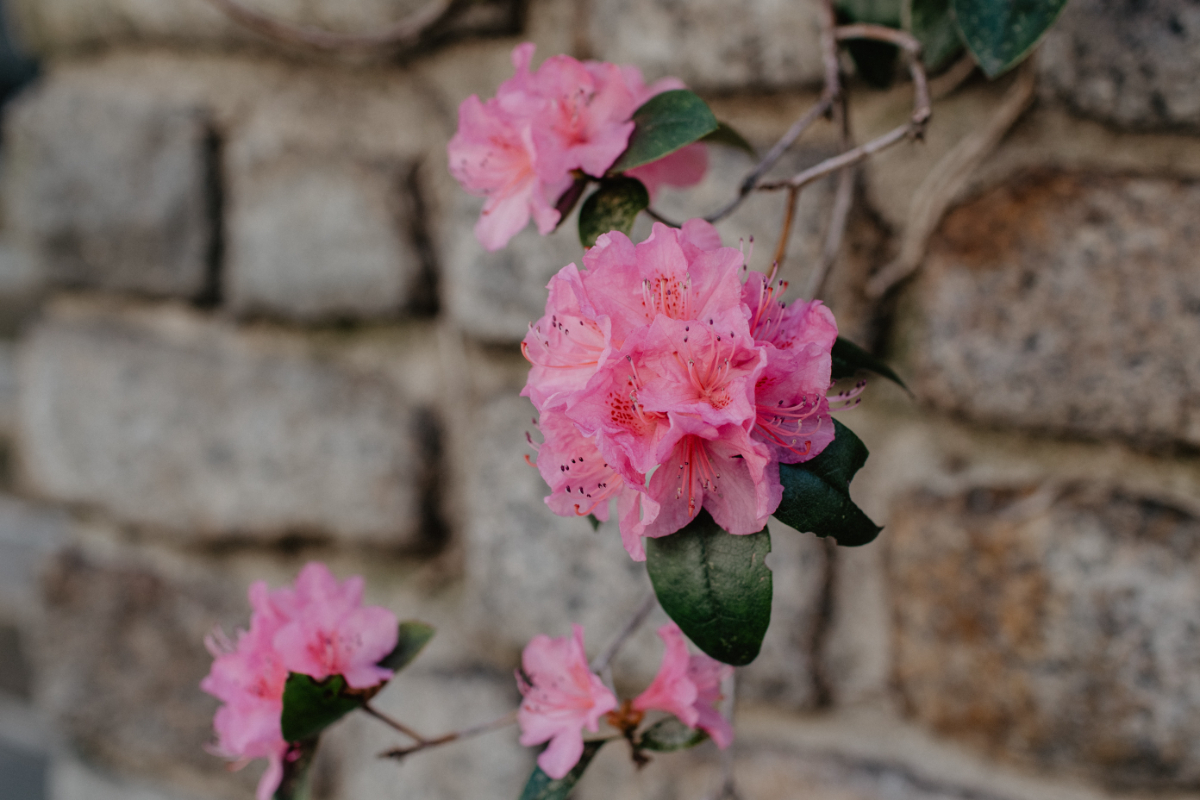Do you need help Protecting Against Invasive Weed Species in the UK? We look at the Types of invasive non-native plants and how to treat them.
What are Invasive non-native plants?
Invasive non-native plants refer to plants, or weeds, that aren't from the native environment and can cause issues when left to grow wild, not correctly disposed of, or purposely cultivated. The introduction of various non-native plants has enriched native gardens; however, some species are recognised as 'Invasive'.
This means that the species invades the local ecosystem and disrupts the natural order. The non-native plants that appear outside of the natural range are generally owed to direct or indirect human impact. If the non-native plants, or weeds, persist in unmanaged natural environments, they can be dubbed 'naturalised'.
Should Invasive Plant Species Be Eliminated?
Most 'naturalised species' present no threat to native plants, yet some can spread and outcompete the native plants, in turn damaging ecosystems, species and habitats. When a non-native species presents these problems, it is considered an invasive plant species.
Non-native plants are considered invasive plant species when there's a severe lack of natural control (i.e. herbivores), a rapid rate of spread (through seed or vegetatively) or subduing other native species for various reasons.
What can Non-native invasive plants do?
Non-native invasive weeds can create a lot of change and destruction to local wildlife and ecosystems when not maintained or monitored. Several effects can occur when an invasive non-native species is allowed to grow wild.
Key problems are listed below:
- A minor or dramatic change in ecosystems and habitats creates non-biotic effects, like a change in water flow leading to flooding or a decrease in necessary nutrients.
- Non-native plants can outcompete native plants through habitat change or rapid spreading, limiting the growth of slower growing native plants and threatening the longevity of the species in the area.
- Non-native plants may not be considered 'Invasive' as soon as they start growing in the UK. If the plant is 'naturalised', it may have been growing for over 100 years with no clear red flags until a later point when it's already widely spread.
- Cost lots of money! Non-native invasive plant species can be pesky and expensive to remove, especially if the weed is outspread. Furthermore, the cost to repair damaged or deteriorated ecosystems can be great, that is, if the damage is even reversible.
Types of invasive non-native plants
There are various types of invasive plants, the top five non-native species you're most likely to find in the UK include:
Japanese knotweed
Otherwise known as Fallopia, Japonica is a Herbaceous perennial, meaning it dies down into the ground one year and grows back the next year as roots remain alive. The stems are about 2m tall, with large triangular-shaped leaves.
Although Japanese knotweed has a limited impact ecologically, it's arguably the most economically invasive non-native species, with eradication required by law on property development sites in the UK.
You will find Japanese knotweed in disturbed habitats in urban zones, nearby waterways, canals, and waste ground. The plant grows in the full sunshine; however, it's still shade-tolerant, meaning it can occasionally grow in woodland areas.
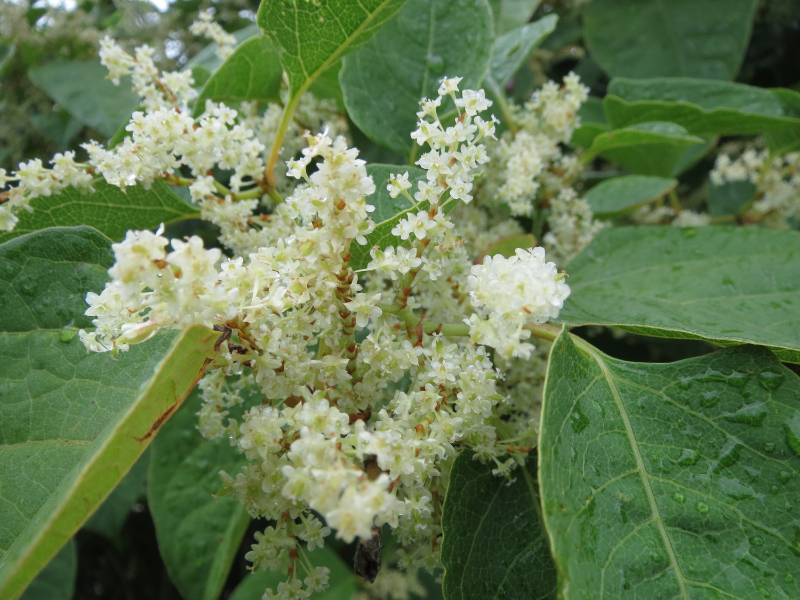
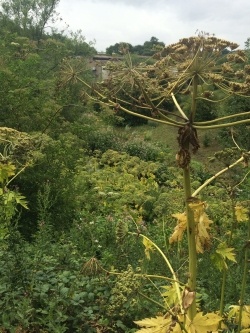
Giant hogweed
Suitably named 'giant', this hogweed is an umbellifer meaning it has disc-shaped umbels with tiny flowers. The flowering stems are generally 2-3m high with flowers up to 80cm in diameter. Leaves at the base are usually around 1m in size. Giant Hogweed sap can sensitise human skin to UV light, in turn facilitating severe blisters.
The sap can leave skin affected for several years after contact. Furthermore, the species is a robust competitor for native plants as it produces almost pure strands, in turn excluding native species and hindering the growth of slower developing plants.
You can find Giant Hogweed in abundance near lowland rivers and streams and on waste ground with rough pastures. Moist, fertile soil with partial shade is the best environment for Giant Hogweed growth. Open grassland space also facilitates growth; however, grazing can lead to slower growth or flowering.
Himalayan balsam
Otherwise known as Impatiens glandulifera, this hairless annual herb has thick succulent hollow steams of 2.5m with a reddish-translucent colour. Its leaves are generally in whorls of 3 or opposite, with flowers being 5-18cm long and 3-7cm wide. The flowers are a deepish purple to pink and white with short spurs and helmeted upper petals.
Also, the plant gives off a strong, noticeable balsam smell. The species thrives on the soft, moist, semi-shaded banks of waterways/bodies.
Its impact on the UK environment is substantial; with the invasive species rapid spreading, the plant creates an extensive monoculture that excludes most other plants and causes great damage to native ecosystems.
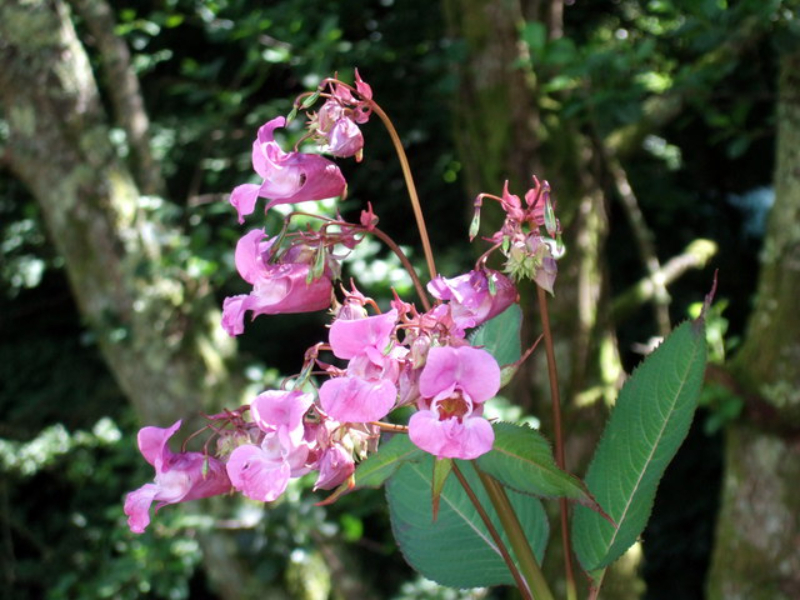
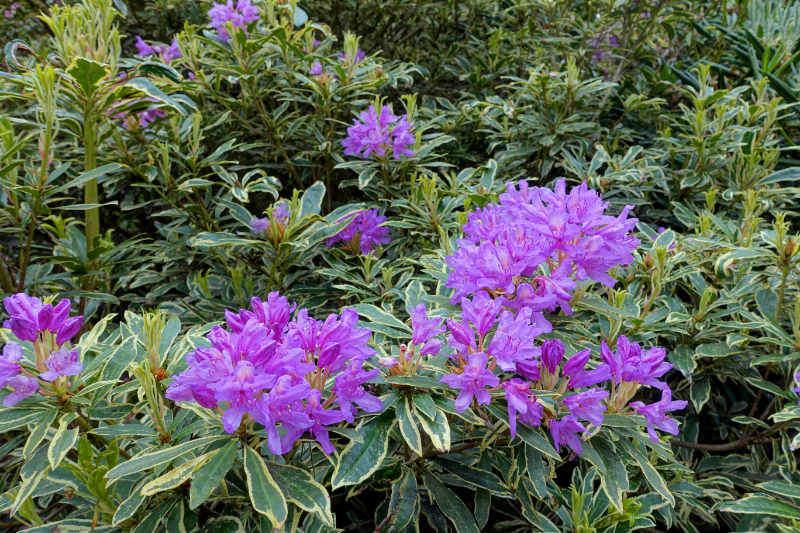 >
>
Rhododendron ponticum
With dense branches growing up to 5m, this evergreen shrub remains functional through more than one growing season. Its violet-ish flowers grow into racemes of 10 to 15 (flower clusters with separate flowers attached by short equal stalks at equal distances along a central stem).
It creates dense thickets that often put native plants in the shade, limiting the regeneration of trees and destroying the ground vegetation.
Even worse, this species isn't controllable by natural grazing as it's poisonous to livestock and hosts the diseases- Phytophthora ramorum and P. kernoviae, which attack oak and beech trees.
Growing on acidic soil, the Rhododendron favours moorlands, woods, rocky bands, derelict gardens and waterways. Although the species is controlled on some sites, it's still spreading in others.
New Zealand pygmyweed
Otherwise known as 'Australian swamp stonecrop' or Crassula helmsii, this aquatic perennial plant sports yellowish-green opposite succulent leaves. Its white, pale pink flowers grow to a length of less than 20mm, with individual pedicels greater than 2mm.
This non-native species covers small pounds (depth of 0.5m) and can cover larger, deeper water bodies such as lakes, reservoirs and canals.
The growth of New Zealand Pygmyweed can cause drastic decreases in native plants and wildlife, in addition to disrupting recreational and commercial activities.
This plant is incredibly malleable and can tolerate a wide selection of conditions, from oligotrophic (nutrient empty) to eutrophic (nutrient full) and varying levels of acidity in soils.
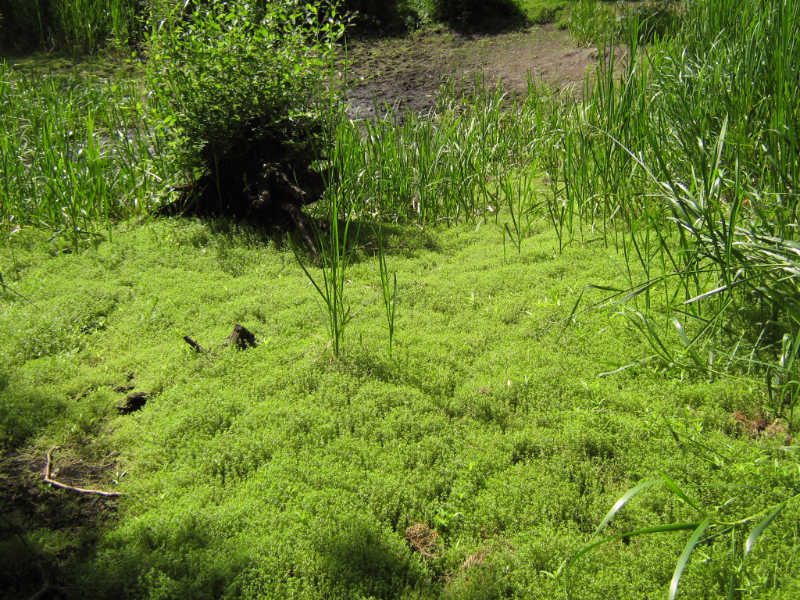 >
>
Treating invasive non-native plants
There are various ways to treat and safely dispose of invasive non-native species.
The options are:
- Spraying with chemicals
- Pulling/digging out live, dead or dying plants
- Cutting plants back to prevent the seeds from dispersing
- Burying
- Burning
- Disposing of off-site
Invasive non-native plants must be disposed of properly and safely, ensuring no plant fragments damage the environment or endanger human health. There are designated disposal sites for invasive non-native plants, which should be used domestically and commercially within the EU. The successful re-establishment of native plants, and local ecosystems, after treating invasive non-native species is paramount.
The re-population of native plants and reduction of invasive plants will help minimise soil erosion, and resituated competition from native plants, in turn preventing re-invasion of non-native species. Create a schedule to repopulate the areas successfully, and follow advice from the GOV or local experts
Spray plants with chemicals
The most well known and effective treatment for invasive plants is to spray or inject them with an approved chemical (herbicide). However, these chemicals themselves can cause various problems with human health in the long term.
Herbicides may need more than one spray to completely remove larger patches of plants and minimise the chance of the invasive species reappearing.
Get certificates, assessments and permission to spray plants
To use the approved chemicals, you must either:
- retain a certificate of competence for herbicide use, or be overseen by a certificate holder
- complete a Control of Substances Hazardous to Health (COSHH) assessment in protected areas like sites of special interest, ensure you receive permission from 'Natural England'.
- when using near or in water, collect an agreement from the Environmental Agency
Disposing of plant material
There are various ways to safely dispose of invasive non-native plants. The list includes burning, burying and trusted collection companies. Be responsible and follow advice to avoid unwanted complications with local ecosystems and the law.
Bury
Invasive non-native plant waste can be disposed of at a landfill site as long as you have the correct environmental permit. The waste that can be disposed of this way includes soil containing Japanese knotweed or its rhizome (stems growing underground producing roots).
You can bury invasive non-native plants without a permit, but the conditions put forward in 'the treatment and disposal of invasive non-native plants (RPS 178).
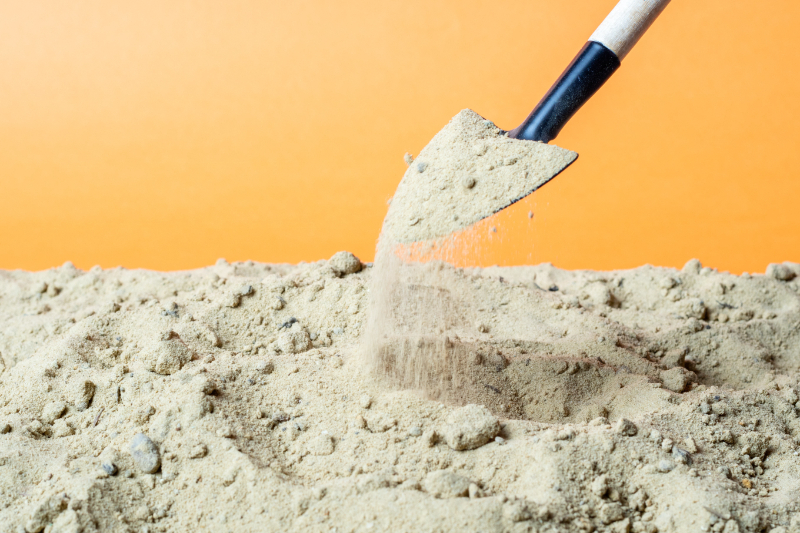
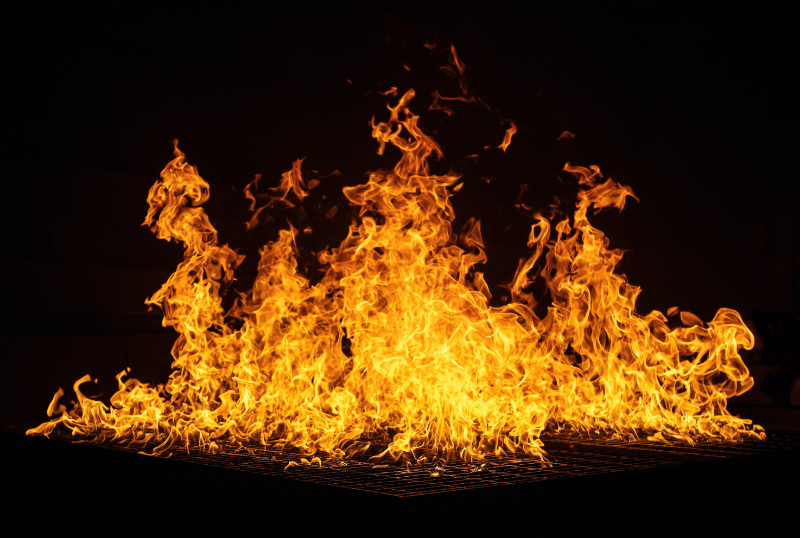
Burn
You can also burn the invasive non-native plant material on the site it was removed; just follow these requirements:
- get a burning waste in the open exemption (a D7 exemption)
- follow local bylaws and cause no nuisances- check what you can burn.
- follow the guidance from treatment and disposal of non-native plants: RPS 178 guidance when you bury ash or any remaining plant material on-site or dispose of it at a permitted landfill site
Do Not
You can also burn the invasive non-native plant material on the site it was removed; just follow these requirements:
- cause any risk to water, air, soil, plants or animals
- cause noise or odour nuisance
- harm the local environment or sites of special interest
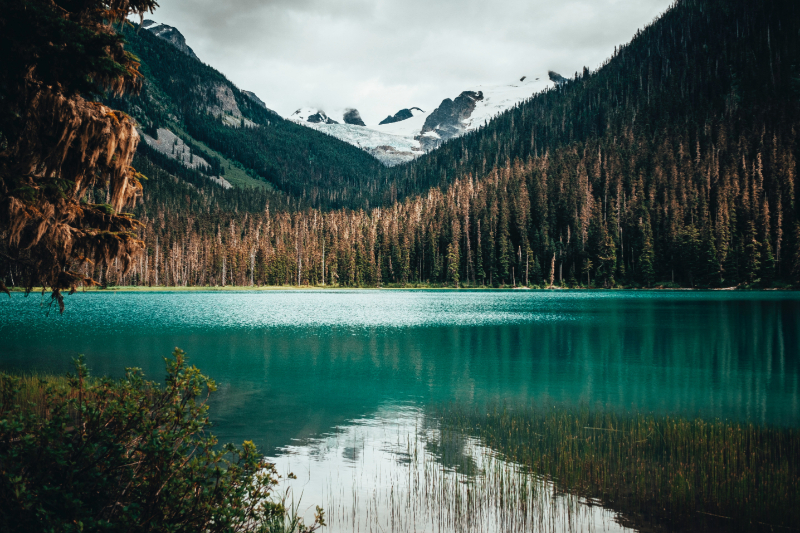
How to safely dispose of plants off-site
When soil or plant material becomes contaminated with an invasive non-native plant species, it can cause irreversible ecological damage. The soil or plant material could contain fragments of the plant that could regrow in the wild, such as seeds, rhizomes or corms.
When disposing of the invasive non-plant waste off-site, you should ensure you:
- use a Registered Waste Carrier
- send to an official landfill site or disposal site- contact the local council or check the Environmental Agency Public Register
Never compost non-native plants, why you may ask? This is simply because invasive non-native species are generally persistent and will survive in the composting process. Furthermore, the areas the compost is used can become infested with the non-native species even from a fragment.
Instead, you should dispose of contaminated soil responsibly, using relentless chemicals, like herbicides that don't break down. This becomes hazardous waste that must also be disposed of safely. You can refer to the Wildlife and Countryside Act 1981 for further guidance on the disposal of invasive plants. Alternatively, the UKGOV website and local councils will offer specific advice, although it's likely you'll need to hire a specialist contractor to remove the hazardous waste.
Do you have a Japanese Knotweed problem? If you require Japanese Knotweed Removal in Essex or throughout the UK, contact our expert today.
.png)
